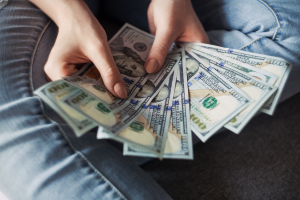S&P 500: 2.47% DOW: 1.81% NASDAQ: 4.32% 10-YR: 3.51%

Last Week on WallStreet - January 28, 2023
What Happened?
As investors digested the influx of corporate earnings reports and economic data, stocks turned sharply higher on optimism of a stronger-than-expected 2023. The Federal Reserve's preferred inflation measure moderating and a shaky economic outlook drove hopes that the Fed will back off its hawkishness sooner than previously thought. All eyes now turn to next week's meeting of the FOMC to discover if these hopes will be supported or dashed by Chair Powell and the committee.
Beneath the surface, cyclical sectors, the most damaged areas in 2022, had yet another strong week to kick off 2023. Discretionary (6.4%), Technology (4.1%), and Communications (4.1%) led the charge upward. Defensive stocks did not garner as much enthusiasm as Healthcare (-0.8%) and Utilities (-0.5%) finished as the only down sectors for the week.
US Economy Grew a Sturdy 2.9% at the End of 2022, GDP Shows - But Don't Look for a Repeat Soon
- The economy grew at a robust 2.9% real annual pace in the fourth quarter
- GDP grew at a 2.1% rate in 2022, down from 5.9% in 2021
- Consumer spending increased a solid 2.1% rate for the year while business spending was mixed
- The trade deficit improved by 0.6% and government spending rose 3.7%
- Inventories grew while spending on new equipment declined
The key takeaway - While the initial readings for economic growth in the fourth quarter are solid and better than expected, inflation is still high and the Federal Reserve is still hiking interest rates. Many indicators, including data from this resilient headline report, show the economy is losing steam and most experts expect 2023 growth to be flat or shrink, instigating a recession. How this dynamic evolves throughout the rest of the year will primarily depend on if inflation can decline quickly enough to sate the Fed and whether the labor market remains strong throughout the pain.
US Consumer Spending Ends 2022 on Weaker Footing; Inflation Slowing
- US consumer spending fell for a second straight month in December; declining 0.2%
- Adjusting for inflation, consumer spending fell 0.3% in December, the biggest decline in a year
- The report from the Commerce Department on Friday also showed the smallest gain in personal income in eight months
- Goods spending fell almost across the board while spending on services helped anchor consumption
The key takeaway - Higher borrowing costs have put a damper on consumer spending as credit has become increasingly expensive to access. This in addition to Americans having drawn down excess savings built up during the pandemic leads to a deteriorating picture for spending seen in the past two reports. On the plus side, subsiding inflation, and therefore increased real wages, could help mitigate the damage seen and limit the expected fall in spending.

From the Waterloo Watercooler
The toymaker Hasbro cut about 15% of its global workforce after its holiday-season sales dropped 17% from the prior year
An asteroid made one of the closest approaches to Earth on record, skimming our planet just 2,200 miles above the Pacific Ocean (closer than some satellites)
The glitch that wreaked havoc on New York stock trading on Tuesday morning was caused by a “manual error” involving a disaster recovery system
The DOJ and a handful of states are accusing Google of abusing its market power through its tech that controls how the US digital ad industry operates


